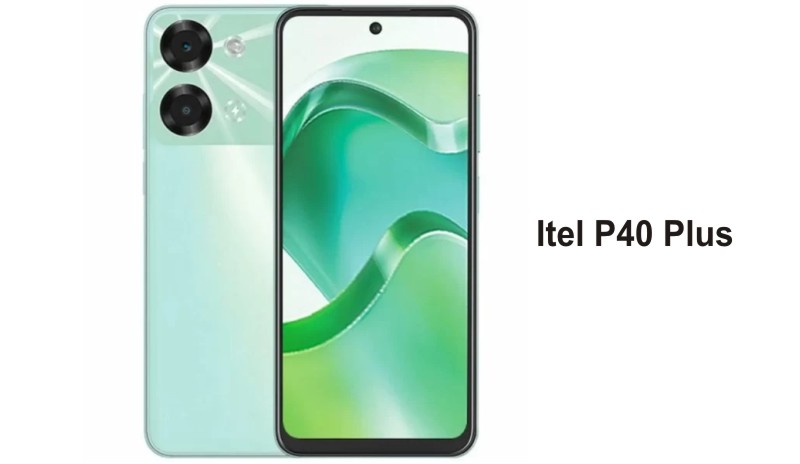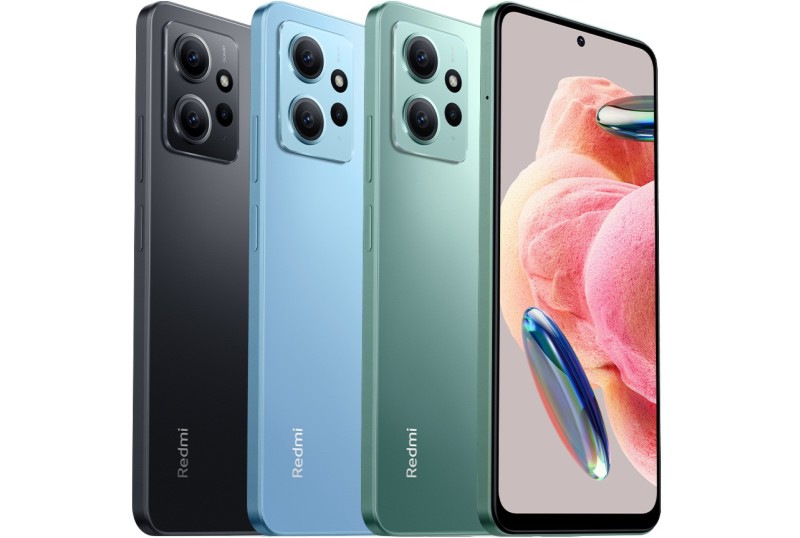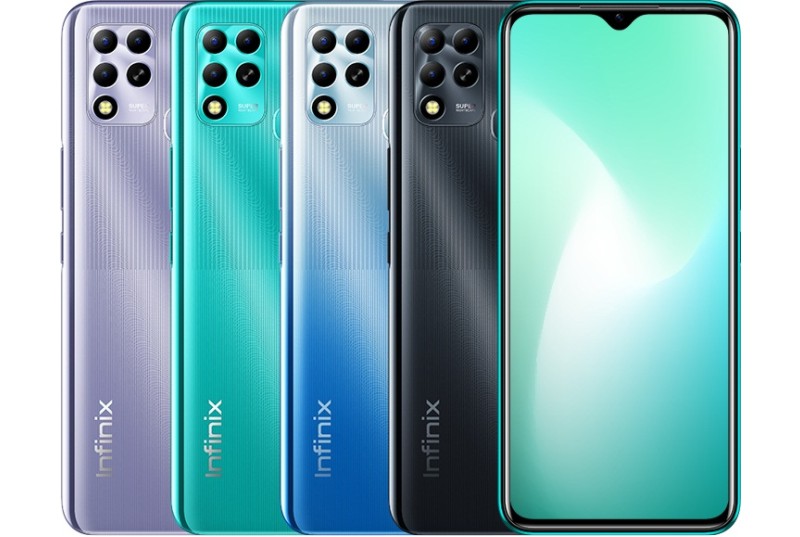Itel P40 (P662L) And Itel P40 Plus (P683L) Price, Review And Specifications.
Itel P40 (P662L) Quick Specs:
Display: 6.6" HD+ (1612×720) Drop-notch IPS-LCD Display.
Software: Android 12 OS.
CPU: Unisoc SC9863A.
RAM: 4GB (Plus up to 3GB of Virtual RAM).
Storage: 64GB (expandable to 512GB).
Rear Camera: Dual-lens (13MP+AI).
Front Camera: Single-lens (5MP).
Security: Rear-mounted fingerprint reader, Face Unlock.
Port: Micro-USB.
Network: 4G.
Battery: 6,000mAh.
Charging Speed: 18W.
Starting Price:
₦80,000, GH₵ 799, KSh 11,180, UGX 260,000.
Itel P40 Plus (P683L) Quick Specs:
Display: 6.8" HD+ (1640×720) Dot-in IPS-LCD Display.
Software: Android 13 OS.
CPU: Unisoc Tiger 606.
RAM: 4GB (Plus up to 4GB of Virtual RAM).
Storage: 128GB (expandable to 512GB).
Rear Camera: Dual-lens (13MP+AI).
Front Camera: Single-lens (8MP).
Security: Side-mounted fingerprint reader, Face Unlock.
Port: USB Type-C.
Network: 4G.
Battery: 7,000mAh.
Charging Speed: 18W.
Starting Price:
₦90,000.
Basically, these two Itel phones are meant for those who are looking for affordable android phones with bigger batteries. Because, compared to the regular 5,000mAh battery that accompanies most of the recent phones, Itel P40 (P662L) and Itel P40 Plus (P683L) are equipped with 6,000mAh and 7,000mAh batteries respectively.
Yet, in spite of their bigger batteries, these two phones still maintain the selling features of the competitions. For instance, both of them wear attractive looks and they have pretty displays. Their processing powers also remain as those of the competitions.
However, some of the features of the Itel Plus 40 are of better qualities, when you compare them to those of the regular P40. First instance, Itel P40 Plus is equipped with a stronger CPU. As a result, it was able to move faster and deliver smoother performance than the regular variant. Also, while the Plus variant was pre-installed with recent version of Android OS, the regular P40 was pre-installed with old version of the OS. Photos taken with the regular variant are also little over-saturated (or over-processed) and less clearer, when compared to the ones of the P40 Plus. Nonetheless, and despite looking better than those of the regular variant, photos taken with the Plus variant are not as nice as looking as those of the contenders.
Yet, in addition to their bigger batteries, stylish looks and pretty displays, both Itel P40 and Itel P40 Plus pack a few remarkable and up-to-date features that you don't often see on budget phones, especially the ones at this price point. More on that later.
Speaking about their designs, both Itel P40 and Itel P40 Plus are nice-looking phones. Though as expected, the Plus variant looks more premium and classier than the regular Itel P40. And it's also more bigger.
In details, Itel P40 Plus has the same form factor as its predecessor, i.e., Itel P38 Pro (P682L), and it also has the same 6.8-inch screen. Though, instead of a notch, the screen of the latest phone sports a camera cut-out. Which makes the front of the phone to look more sleeker than that of the earlier model.
Also on the other hand, the regular Itel P40 has the same form-factor and the same 6.6-inch drop-notched display as the earlier Itel P38 (p661w). Yet, as a result of minor cosmetic changes, Itel P40 still looks more attractive than its predecessor.
Talking about their displays. Despite that both Itel P40 and Itel P40 Plus maintain the screen sizes and 720p resolutions of their respective predecessors, yet, the screens of the new phones are more visually appealing. Especially the one on the Itel P40 Plus. The display of the P40 Plus is also the only one that features 90Hz (or high) screen refresh rate.
But, despite that the feature is missing on the regular variant screen (in addition to the fact that the screen is not as appealing as that of the P40 Plus), it's still a nice looking display. And it looks slightly better than the one on the earlier Itel P38.
There's an 8-megapixel selfie lens on the front of the Itel P40 Plus and a 13-megapixel dual camera on its back. The regular P40 also has a 13-megapixel dual rear camera, but the front-facing camera of the phone is fitted with a 5-megapixel sensor. As a result of its low megapixel front-facing camera, selfies from the regular P40 are not as clear, neither as nice-looking as those of the Itel P40 Plus. Even, as i mentioned earlier, despite that it features the same 13-megapixel main rear camera as the P40 Plus, the shots from the rear camera of the regular P40 are less detailed and more colour concentrated, when you compared them to those of the Plus variant.
Like their predecessors, both Itel P40 and P40 Plus packed Unisoc (Spreadtrum) processors under their hoods. But, while the regular P40 is fitted with Unisoc SC9863A (the same CPU that's inside the last year's Itel P38 Pro), Itel P40 Plus comes with a more recent and more capable Unisoc Tiger 606. Though T606 is still categorized as an entry-level CPU like the SC9863A, but its processing power is way ahead of the SC9863A.
Therefore, as a result of its better CPU, Itel P40 Plus is pre-installed with Android 13 OS, while the regular Itel P40 is running on the previous Android 12 OS. Nonetheless, each of the phones features 4GB of RAM; an upgrade from the 2GB of RAM of their predecessors. Though the regular P40 is still available in lower RAM options.
Meanwhile, as a results of its less powerful CPU, the regular P40 is not as swift as the Plus, yet, the phone is responsive and handles day-to-day (but basic) tasks without much efforts. And to ensure consistence smooth performance, both of the phones feature MemFusion or RAM Virtualization. But while the 4GB of RAM of the regular P40 is paired with 64GB internal storage, the 4GB RAM of the Plus variant is paired with 128GB internal storage. Yet, the internal storage capacities of both phone can still be expanded via microSD card.
In addition to its premium design, prettier display, better camera, stronger CPU and higher storage space, Itel P40 Plus still offers a few up-to-date features that are often found on the more expensive phones. For instance, Itel P40 Plus features USB Type-C port and has a side-mounted fingerprint reader. But the regular variant features microUSB port and a rear-mounted fingerprint reader like the previous Itel P38 and P38 Pro. Still, like the earlier models, both of the new phones features single speakers and have 3.5mm audio jacks.
Price And Design Colour:
Currently, the starting price of the Itel P40 Plus is around 90,000 naira. And it's comes in two colour options of Force Black and Ice Cyan. On the other hand, the price of the regular P40 is about 80,000 naira, and it's available in three colour options of Force Black, Dreamy Blue & Luxurious Gold.
Design:
Compared to the curved edges and curved back covers of the earlier Itel P38 and P38 Pro, Itel P40 and P40 Plus sport flat edges and flat back covers. And it's the modifications that caused the two new phones to looks more stylish and classier than their predecessors. Both of the latest phones also sport a more bigger and rectangular shaped camera bumps. And the bumps cover the entire upper parts of their back covers. Because the bumps resemble that of the Infinix Note 12i; which also has similar flat edge and flat back cover, Itel P40 and P40 Plus looks almost like the Infinix phone. In short, as a result of a similar hole-punch display and almost the same footprint, the better equipped Itel P40 Plus looks almost like the Note 12i.
Meanwhile, in addition to its sleeker and more premium looks, Itel P40 Plus also has a better build quality than the regular Itel P40. However, as at a result of its bigger size and bigger battery, the Plus variant is heavier and less compact. Furthermore, while the back cover (except for the camera bump section) of the regular P40 sports matte finish and fine bumpy lines, the back cover of the Plus variant, on the other hand, sports a more premium semi-glossy finish.
Nonetheless, despite that the P40 Plus features USB Type-C port and a side-mounted fingerprint reader (compared to the rear-mounted fingerprint reader and a microUSB port of the regular Itel P40), the arrangements of ports and buttons on the two phones are still similar. For instance, both phones have their volume keys and power buttons on their right sides. And their 4G dual nano-SIM+microSD slots (trays) are located on the left edges. Both phones' 3.5mm audio jacks, mouthpiece, single speakers and charging ports are also located on their bottom edges. But because the power button of the P40 Plus also doubles as a fingerprint scanner, you only have dual camera and LED Flash inside the camera bump of the better equipped variant. On the other hand, the camera bump of the regular P40 includes rear-mounted or physical fingerprint reader.
Cameras:
As i said, photos take with the Itel P40 Plus looks much better the ones from the Itel P40 (despite that both of them feature 13-megapixel dual rear cameras). Though, normally, photos taken with the Plus variant ought to look better, because it has better CPU and better software, still, the difference in their photo qualities are too glaring.
Photos from the Itel P40 Plus are more vivid and have better colour representation. Dynamic range also looks decent. And the shots are moderately sharp. When you Zoom-In, which can go up to 10x, the photos maintain a respectable level of clarity.
Though, photos from the P40 Plus are not remarkably detailed as those of the slightly more expensive entry-level phones, especially those ones that come with higher megapixel sensors, still, other picture qualities of the photos (from the Itel phone) remain as those of the more expensive phones.
Also, like the shots from the rear camera, selfies from the 8-megapixel front-facing camera of the P40 Plus also have pleasant colours and look vibrant. Yet as expected, the selfies are not detailed. Though the level of sharpness or clarity is still acceptable. And it's much better than that of the regular P40.
On the other hand, and despite that the shots from the 13-megapixel rear camera of the regular P40 are not as detailed as the ones taken with the P40 Plus, they are moderately clear and sharp. Although colours also look vibrant and pleasant, they are over-saturated.
And despite that the selfies from the front-facing camera of the Itel 40 are also bright and have pleasant colours, yet like the shots from the rear camera, they are on the saturated side too. In addition to that, the selfies lack detail.
But, for a phone at this price point, selfies from the 5-megapixel front-facing camera of the regular P40 maintain decent level of clarity.
Still, if you're the type of person that likes to take selfies constantly, i'd still say should add money and go for the better equipped Itel P40 Plus. Or better still, go for the Itel Mobile's Selfie series, like Itel S18.
By the way, for their rear and front-facing cameras, both Itel P40 and P40 Plus can shoot videos up to 1080p at 30fps (frame per second). And there's no Image Stabilization for either of the two phones.
Display:
Apart from having different screen sizes, the 720p resolution of each phone's display also packs slightly different pixels. While the 6.6-inch display of the Itel P40 has a 720p resolution of 1612-by-720 pixels (268ppi), the 6.8-inch screen of the Itel P40 Plus has a slightly different 720p resolution of 1640-by-720 pixels (254ppi). Which also implies that both of the latest phones maintain the screen sizes and resolutions of their respective predecessors (Itel P38 and P38 Pro). Nonetheless, and as i said before, both displays (of the latest phones) look more prettier, compared to the ones on their predecessors.
For instance, despite having the same pixel density (sharpness) as the one on its predecessor (Itel P38), the screen of the Itel P40 offers slightly richer colours and better contrast. But it seems the peak brightness of the latest one has reduced a little. So, the screen of the Itel P40 struggle to cope under direct sunlight.
On the other hand, and while the screen of the regular Itel P40 maintain the standard 60hz refresh rate like those of the two previous phones (Itel P38 and P38 Pro), Itel P40 Plus display support 90hz screen refresh rate (for smoother gaming, page swiping and scrolling).
Secondly, and in addition to the fact that the screen of the Plus variant is a little more vibrant and have better colour reproduction than that of the regular P40, it also looks more appealing than that of the earlier P38 Pro. In short, the screen of the Itel P40 Plus is one of the nicest looking ones at this price point. And considering its bigger size, the screen is good for media consumption. The screen is also bright enough to view under direct sunlight, though it's still not the brightest around.
Processing Power & Software:
Basically, both Unisoc SC9863A and Unisoc T606 that powered Itel P40 and P40 Plus, respectively, are entry-level octa-core processors. And they have the same maximum clock speed of 1.6Ghz. However, the T606 is a 12nm CPU, while the SC9863A is a 28nm CPU. Which implies that the T606 is more power efficient than the SC9863A.
T606 also features 2x 1.6GHz CortexA75 Arm and 6x 1.6GHz CortexA55 Arm, while the SC9863A is made up 4x 1.6GHz CortexA55 Arm and 4x 1.2GHz CortexA55 Arm. Which also means that T606 packs a more beefier processing power.
So, apart from the fact that the T606, that's inside Itel P40 Plus, is more power efficient, also it's able to deliver better performance than the SC9863A that comes with the regular Itel P40. And i think this is why the regular variant is running on the Android 12 OS, while the Plus variant is pre-installed with a more recent Android 13 OS.
Therefore, and despite that both of them are equipped with 4GB of RAMs, Itel P40 Plus moves faster (in spite of its recent OS) and handles graphics demanding tasks more better than the regular Itel P40.
This doesn't mean that the regular variant is sluggish, it's just mean that it's not as quick, neither as responsive, as the Plus variant. Also the phones didn't cope well with graphics demanding tasks.
Also despite that both of them support MemFusion or RAM Virtualization, the Virtual RAM of the Plus variant can be increased up to 4GB, while that of the regular P40 maxed out at 3GB. In other words, the default 4GB of RAM of the Itel P40 plus can be expandable up to 8GB (4+4) via MemFusion, while the one of the regular P40 can only be expanded up to 7GB (4+3). And like their Virtual RAMs, the 64GB and 128GB inbuilt storage space of the respective Itel P40 and P40 Plus can also expanded via microSD cards up 512GB.
Battery:
Though the 6,000mAh battery of the regular Itel P40 is bigger than the usual 5,000mAh battery that accompanies the competitions, but when i compared the battery life of the regular variant to those of its main contenders, the difference is not that staggering. And it's because the contenders are equipped with 12nm CPUs, which (though less powerful) are more energy efficient than the 28nm CPU of the regular variant.
On the other hand, however, Itel P40 Plus is one of the very phones at this price point that has unrivaled battery life. Which is as a result of its huge 7,000mAh battery and more energy efficient 12nm chipset.
Meanwhile, despite that both of the Itel P40 and P40 Plus support 18W fast charging, it will take you much longer time to fully charge the bigger battery of the Itel P40 Plus. I think Itel Mobile should have complemented the bigger battery of the P40 Plus with 25W fast charging.
Itel P40 (P662L) And Itel P40 Plus (P683L) Full Specs:
GENERAL
MAKERS:
Itel Mobile.
MODEL NAMES:
Itel P40 (P662L) and Itel P40 Plus (P683L).
YEAR ANNOUNCED:
September, 2023.
DIMENSIONS:
N/a
WEIGHTS:
N/a
COLOURS:
Ice Cyan & Force Black (P40 Plus).
Dreaming Blue, Luxurious Gold, & Force Black (P40).
DISPLAY
Screen Type IPS-LCD Capacitive Touchscreen, (Both).
Size and Resolution
6.6-inch, HD+, 1612x720 pixels, (P40).
6.8-inch, HD+, 1640x720 pixels, (P40 Plus).
Aspect ratio & Pixel Densities
20.15:9, 269PPI, (P40).
20.5:9, 254PPI, (P40 Plus).
Protection N/a.
PROCESSOR & SOFTWARE:
CPU:
Unisoc SC9863A Octa-Core Processor, 1.6GHz (P40).
Unisoc T606 Octa-Core Processor, 2.0GHz (P40 Plus).
GPU:
PowerVR-GE8322 (P40).
PowerVR-GE8320 (P40 Plus).
Operating System:
Android 12 OS (P40).
Android 13 OS (P40 Plus).
RAM & STORAGE:
Default: 4GB (Both).
Internal Storage.
64GB (P40).
128GB (P40 Plus).
Micro-SD card:
Up to 512GB (Both).
SIM AND NETWORK:
SIM;
Dual Nano SIM (Both).
Network;
GSM, 3G WCDMA, 4G LTE (Both).
CAMERA:
Rear camera;
Dual-lens (13MP f/1.8 +QVGA), LED-Flash (Both).
Front camera;
Single-lens (5MP), f/2.0, Screen Flash (P40).
Single-lens (8MP), f/2.0, Screen Flash (P40 Plus).
VIDEO RECORDING:
Rear Camera;
1080p @ 30 fps (Max) (Both).
Front Camera;
1080p @ 30 fps (Max) (Both).
CONNECTIVITY:
3.5mm Audio Jack: Yes (Both).
Micro-USB Port: (P40).
USB Type-C Port: (P40 Plus).
Others: Wi-Fi, Bluetooth 5.0, HotSpots, USB-OTG (Both).
SENSORS AND BIOMETRIC
Security:
Face Unlock.
Rear-mounted fingerprint reader (P40).
Side-mounted fingerprint reader (P40 Plus).
Sensors: Ambient light sensor, Proximity sensor, G-sensor, Accelerometer And Barometer sensor (Both).
Others: GPS, Location (Geo, Glonass), Radio (Both).
BATTERY & CHARGING RATE:
Capacity:
6,000mAh (P40).
7,000mAh (P40 Plus).
Fast Charging:
Yes, 18W (Both).
Water Resistant:
No.




.jpg)





